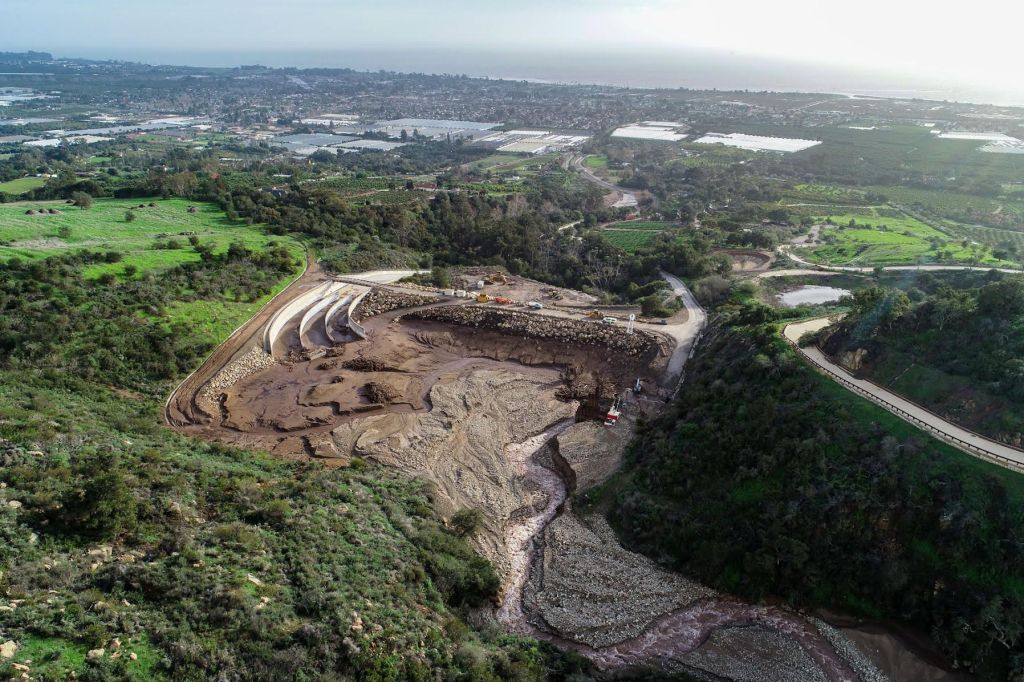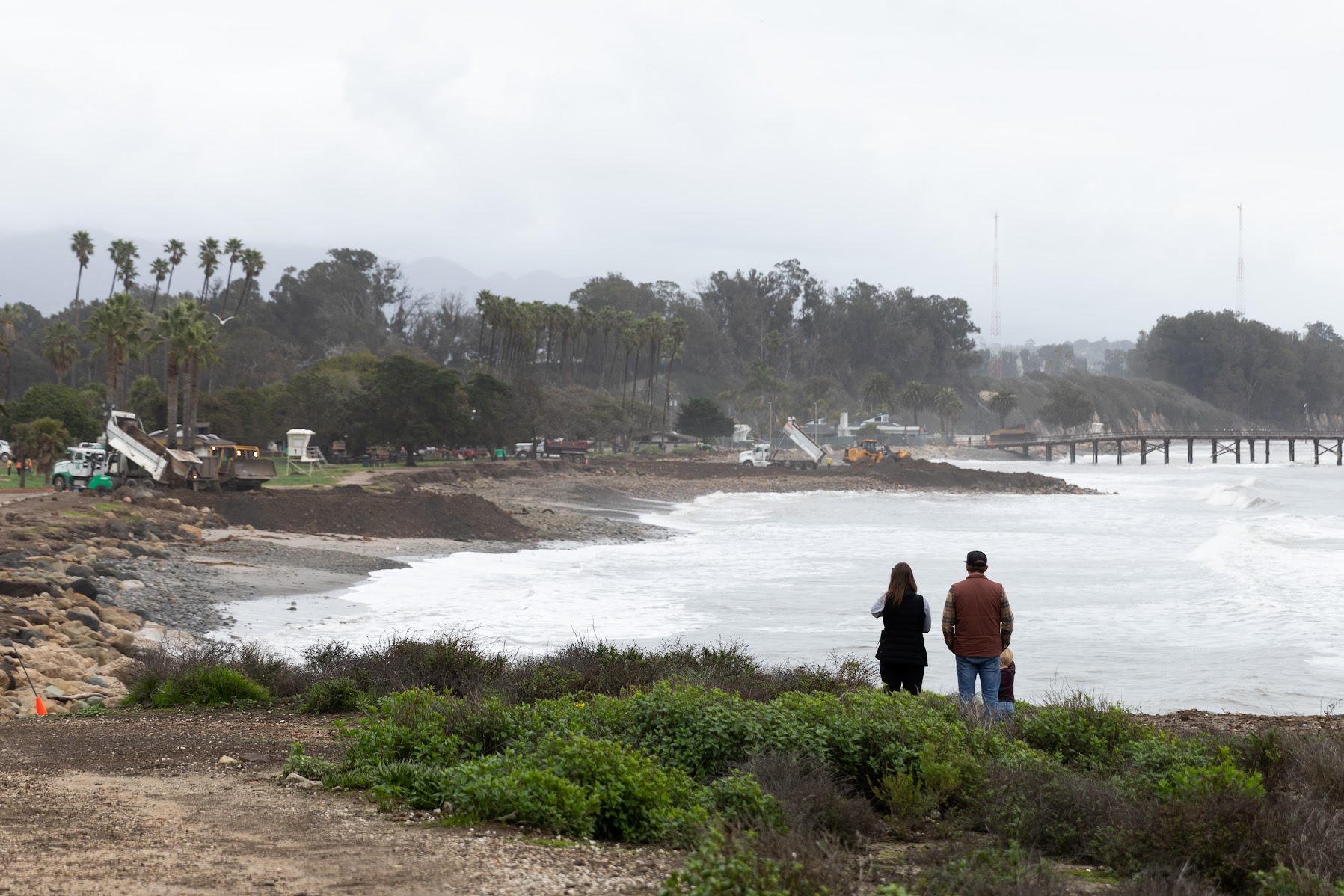After the Deluge, Santa Barbara County Assesses the Damage Done
Emergency Planners Estimate Last Week’s Storms Will Cost the County $147 Million

[Update: Jan. 17, 2023, 10 p.m.] Late Tuesday, President Joe Biden added Santa Barbara, San Luis Obispo, and Monterey counties to the list of three California counties for which he has issued a Major Disaster Declaration. This declaration is of critical help not just for local governments and tribal authorities in making their disaster reimbursement claims with the Federal Emergency Management Agency, but for individual homeowners and business owners as well. Read more here.
[Original Story] As blue skies and sunshine start to reassert themselves in Santa Barbara following a parade of atmospheric rivers that poured rain on the region over the past few weeks, county emergency planners are still trying to figure out just how big a hole they’ll have to dig themselves out of in the months ahead.
The good news for Santa Barbara County remains that nobody died, was injured, or went missing in the storms. That’s not to diminish the drama involved in 400 calls for rescue that first responders fielded. Of those, five required a helicopter hoist. Statewide, however, the picture is decidedly different. To date, 20 people have perished in the deluges, floods, mudslides and debris flows triggered by one of nine atmospheric rivers that have overwhelmed state skies since December 26. Presumably one of those casualties was the 5-year-old boy who was swept away in San Luis Obispo County.
By any reckoning, the final price tag for repairs and recuperation will be extremely high. Unlike previous disasters that were more locally focused — think the Thomas Fire and the 1/9 Debris Flow of 2018 — this one was countywide in scope. While Montecito commandeered most anticipatory emergency response focus — would the scarred hillside blow-torched by the Thomas Fire blow up yet again in the face of last week’s blistering rains? — the brunt of last week’s atmospheric rivers was felt hardest throughout North County and especially in low-income communities such as Guadalupe, where celebrities like Oprah Winfrey, Rob Lowe, or Ellen DeGeneres have yet to settle.
In Orcutt, a giant sinkhole swallowed a street. In Santa Maria, a levee failed to perform, though not in the dramatic fashion one conjures when thinking about failed levees. It was fixed within the day. Another levee failed in Guadalupe near 9th Street; this one was privately owned and is believed responsible for much of the damage there.
Paradise Road, Refugio Road, Tepusquet Road, and Gibraltar Road all will require sustained, serious, expensive work. No fewer than 25 roads — with a combined estimated length of 120 miles — are currently closed. Most of these, stated county Public Works spokesperson Lael Wageneck, “are under a hard closure or open only for emergency access only.” He added, “There is no estimated time for reopening.”
Congressmember Salud Carbajal has been actively touring North County sites as well as locations in San Luis Obispo County to assess the damage. According to communiques issued by Carbajal’s office, the congressmember has also been applying generous quantities of elbow grease in hopes of persuading Federal Emergency Response Agency (FEMA) representatives to give Santa Barbara the highest emergency designation possible.
As of deadline, county emergency planners estimate that last week’s storms will cost the county $147 million. Some portion of that will be covered by the federal government. But just how much — one of the most pressing questions now on any of the county supervisors’ minds — depends on what level of emergency designation adjusters with FEMA deem it’s appropriate to bestow. To date, only three state counties have yet been given the much-coveted highest rating. Santa Barbara is not among the three.

The director of FEMA Region 9 is reportedly touring Santa Barbara County to evaluate the violence wrought to roads and infrastructure. It remains uncertain when his verdict will be rendered. What it will be, matters a lot.
Of the $147 million, the largest cost stems from emptying out the county’s debris basins. That alone is $82 million. The cost of the 150 National Guard members who have been working to clear out these basins since last Friday — not to mention employees of the Army Corps of Engineers — is not included in this sum.
With the highest emergency declaration, the federal government could bail out the County of Santa Barbara to the tune of 75 percent.
“We are looking for an Expedited Disaster Declaration in all categories for public assistance and individual assistance,” declared County Supervisor and Board Chair Das Williams.
At last week’s meeting of the Santa Barbara City Council, it was revealed that not one residential structure had been red-tagged because of flood-related damage. Five homes within city limits, it was reported, had been yellow-tagged. Countywide, however, the picture is less sanguine. Forty-three residential units have been rendered uninhabitable; 22 seriously damaged; 516 acres of farm fields have been swallowed up by floods at an estimated cost of $13.3 million.
Among the casualties of the storm on January 9, 2023, was the entrance to the Santa Barbara Harbor. By Tuesday, January 17, the Army Corps of Engineers had awarded the emergency contract to Pacific Dredge. Their dredge was in San Diego, however, and it was being towed to Santa Barbara as the weather permitted and was set to arrive on January 20, said Erik Engebretsen, the harbor operations manager. Once the dredging begins around January 24, “They suspect it’ll take 48 hours to move enough material for vessels to transit, approximately 30,000 cubic yards,” Engebretsen said. A rock revetment was placed in the Yacht Club parking lot to protect against the wave action, and some pilings needed to be replaced at Stearns Wharf. In total, the dredging, rock, piling replacement, and general cleanup was estimated to amount to about $2.2 million.
A City Fire engine reportedly lost to the flood, however, was back in operation, said Fire Chief Chris Mailes. Firefighters were trying to get to a vehicle stuck in an intersection on the lower Eastside flooded with about two feet of water, he said. Their fire engine’s air intake sucked in water instead, killing the engine, and causing the firefighters aboard to wade to the vehicle to rescue the person inside. Happily, the city’s mechanics blew out the water, and the engine was back at work on the Mesa, the chief said.
Jean Yamamura contributed reporting to this story.

Support the Santa Barbara Independent through a long-term or a single contribution.




You must be logged in to post a comment.